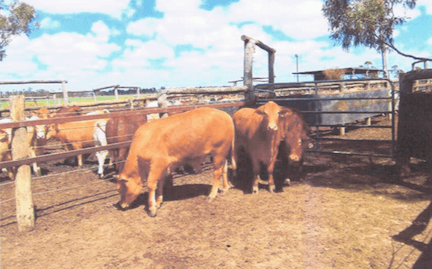SuperFibe Animal Feed
Revolutionary Waste Fiber to Animal Feed Conversion Technology

SUPERFIBE
Superfibe animal feed treats waste plant and crop material with certain organic liquid products at ambient temperature; treated material is then compacted and stored until needed.
It can be used with any so-called lignocellulosic biomass which is the most abundantly available raw material on the Earth. Lignocellulosic plant waste materials include straw, stubble, husks, seed pods, sugar cane bagasse, leaves, grasses, in fact, any plant material.
Inventor
The process to develop Superfibre was invented by John Stamp – the Managing Director of Organic Food and Fertiliser - who has patented the process. The invention is predicated on the discovery that plant material, and particularly lignocellulosic plant material, can be converted to a more digestible form that is suitable for use as an animal feed by a simple treatment process without the need for expensive or hazardous chemicals or a source of heat. This makes it more suitable for animal feed and more readily acceptable to the animal than untreated plant material.
Research and Test Success
Research into the use of this animal feed has been going on for many years and there have been various degrees of success. In no case has there been any detrimental effect to the animal.
Superfibe has been tested on animals by the Sugar Research Institute, University of Queensland, Queensland University of Technology as well as Universities in Asia. Tests have shown improvements in the animals digestibility of the feed, a reduction in the by-pass protein, high acceptance and faster uptake of the feed and a reduction in methane. Also, cattle were healthy and had more vitality.
Benefits
Some of the other benefits of Superfibre are:
- Any lignocellulosic plant waste material can be used including grasses, which can be fresh, dry or at various stages in between.
- The potential to cut feedlot times for cattle by 30%.
- Reduction of methane production in livestock by 70%.
- Minimal infrastructure required and very low capital costs.
- Can be left in the open field for up to 2 years without any degradation of the product or land.
Can be baled, palletized, blocked, cubed, depending on livestock needs. - Simple process to apply the glycerol therefore little training required for the treatment process.
- Can be fed to livestock without further processing.
- Can be combined with additional nutritional components if required.
- Cheaper than other cattle feed.
- Supports environmentally responsible use of waste and reduction of methane which is the highest greenhouse gas pollutant.
Feed-Lot Trial Results:
Ten (10) Droughtmaster cross cattle were inducted in this trial.
Half were fed a (Bagasse Ration) and half on a grain-based rationCattle began trial on 12/05/2016
Although ‘raw’ bagasse is usually considered lowly palatable and poorly digestible the Bagasse Ration group immediately began to eat without hesitation. Manure quality was good and odor low.
After 10 days the visual condition of the Bagasse Ration group looked superior.
At the conclusion of the 55-day feed trial using cured bagasse, the cattle were sold. Results showed the cured ‘treated’ bagasse to be a viable food source: palatable, digestible, good animal well-being and weight gain.
